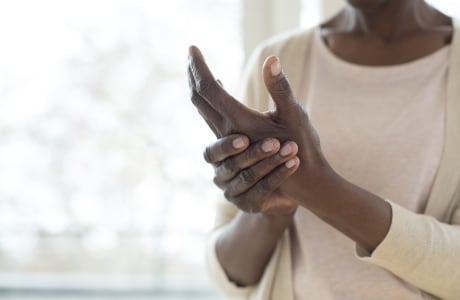Comparing Rheumatoid Arthritis and Osteoarthritis
Overview

Rheumatoid arthritis and osteoarthritis are different types of arthritis. They share some similar characteristics, but each has different symptoms and requires different treatment. So an accurate diagnosis is important.
Osteoarthritis is the most common form of arthritis. The main difference between osteoarthritis and rheumatoid arthritis is the cause behind the joint symptoms. Osteoarthritis is caused by mechanical wear and tear on joints. Rheumatoid arthritis is an autoimmune disease in which the body's own immune system attacks the body's joints.
Characteristics of rheumatoid arthritis and osteoarthritis
| Characteristic |
Rheumatoid arthritis |
Osteoarthritis |
| Age at which the condition starts |
It may begin any time in life. |
It usually begins later in life. |
| Speed of onset |
Relatively rapid, over weeks to months |
Slow, over years |
| Joint symptoms |
Joints are painful, swollen, and stiff. |
Joints ache and may be tender but have little or no swelling. |
| Pattern of joints that are affected |
It often affects small and large joints on both sides of the body (symmetrical), such as both hands, both wrists or elbows, or the balls of both feet. |
Symptoms often begin on one side of the body and may spread to the other side. Symptoms begin gradually and are often limited to one set of joints, usually the finger joints closest to the fingernails or the thumbs, large weight-bearing joints (hips, knees), or the spine. |
| Duration of morning stiffness |
Morning stiffness usually lasts longer than 1 hour. |
Morning stiffness usually lasts less than 1 hour. Stiffness returns at the end of the day or after periods of activity. |
| Presence of symptoms affecting the whole body (systemic) |
Frequent fatigue and a general feeling of being ill are present. |
Whole-body symptoms are not present. |
Credits
Current as of: July 24, 2025
Current as of: July 24, 2025







